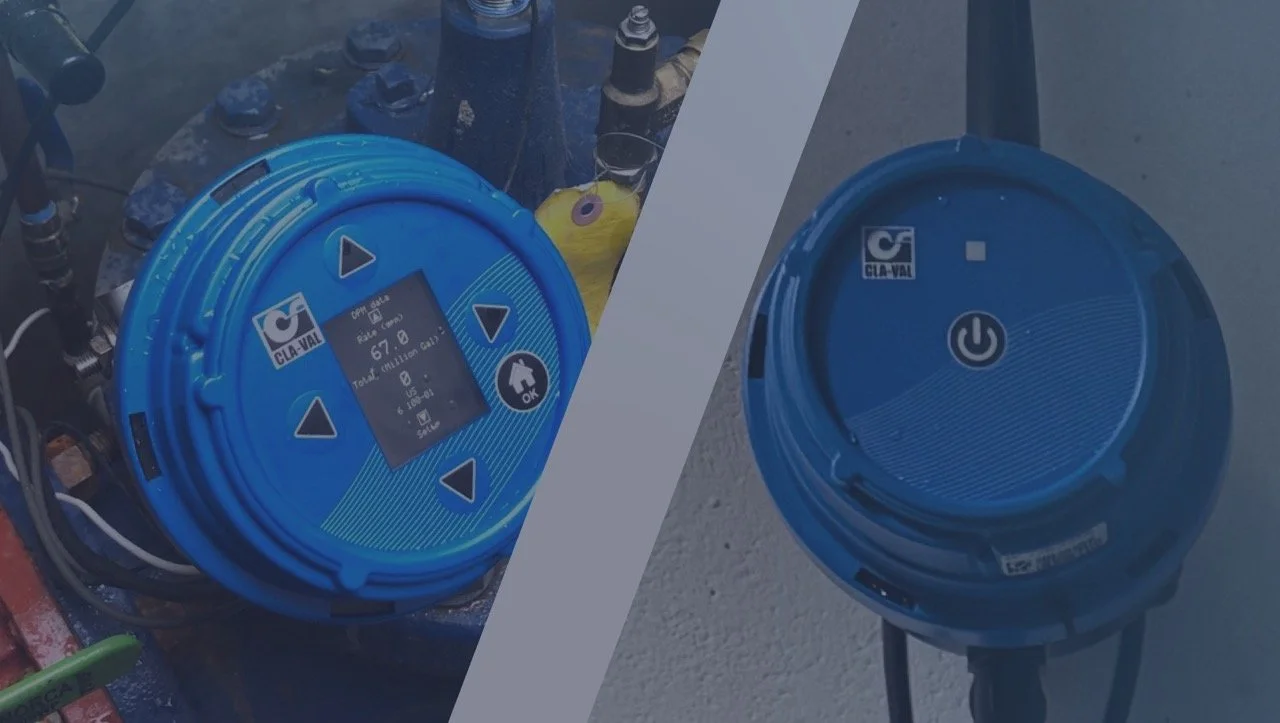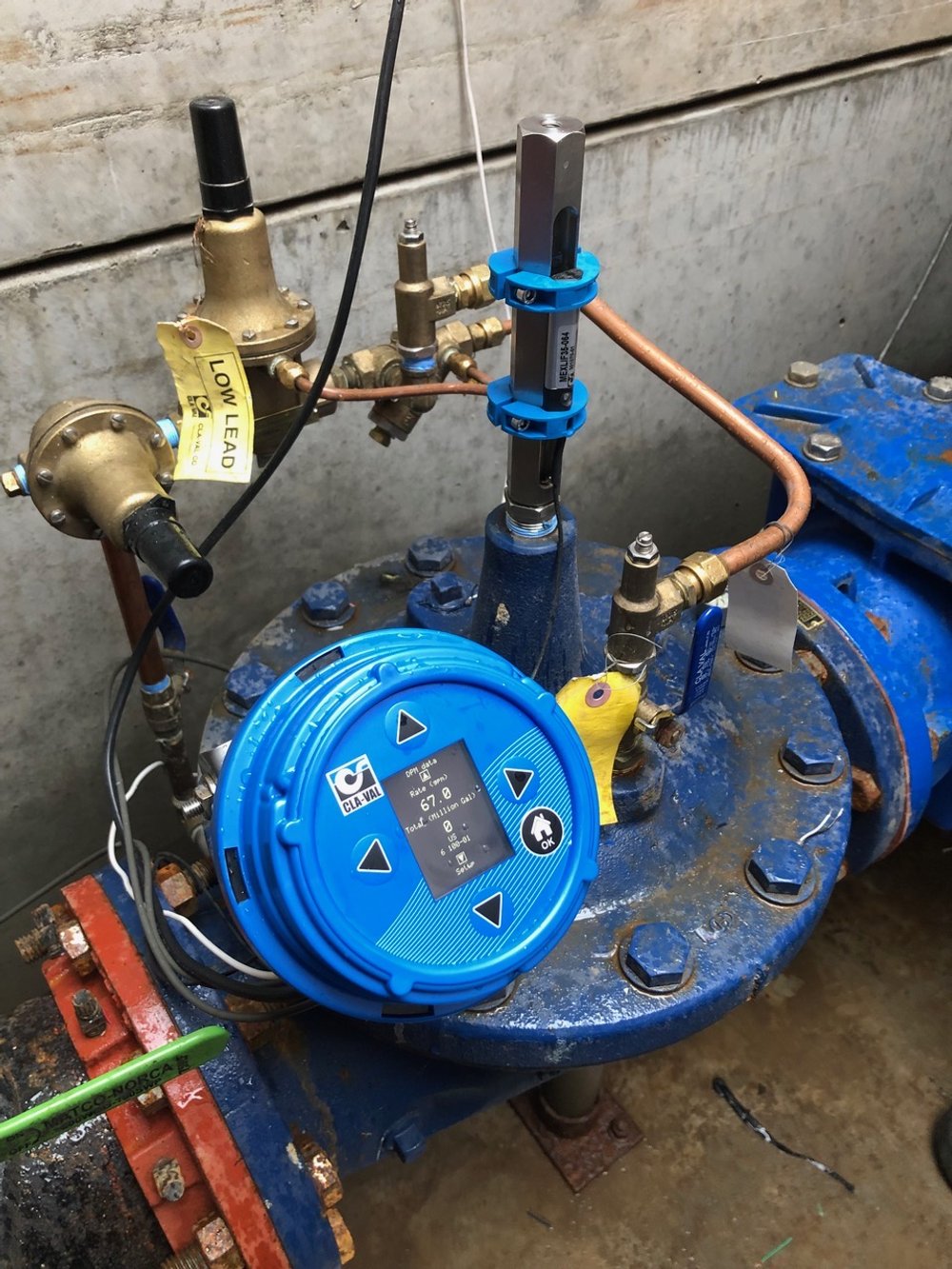Two Different Data Collection Packages
Late last year Cla-Val released the new XP2F-D35* (now XP2F-CV35) – an exciting data logging and flow metering package that provides insight into how your system is operating. The package collects valve inlet pressure, outlet pressure, and percentage open, then calculates the valve’s flow rate to provide insights into what’s happening in your valve and system. Perhaps most significantly, the package also introduced battery power and cell communication – bringing data collection capability to more remote sites.
*Cla-Val has updated the model numbers for both package and controller (XP2F-D35 package has been updated to XP2F-CV35; D35 controller has been updated to CV-log-35).
It’s important to know that the new XP2F-CV35 system does not replace Cla-Val’s original XP2F flow metering and data acquisition package, now called the XP2F-X35. Instead, Cla-Val now offers both the original XP2F-X35 and the new XP2F-CV35 – each with unique features for varying applications.
What makes them different? How are they similar? Which XP2F package is right for you?
With two powerful data collection options to choose between, it looks like we’ve got a good, old-fashioned showdown on our hands! Let's examine both XP2F packages and help you choose which one best fits your applications.
Your town ain’t big enough for the two of them... or is it?
XP2F-X35 Overview
On one side, we have the original XP2F flow metering and data collection package, now called the XP2F-X35. The “X35” utilizes the industry standard 4-20mA signal to collect system data and retransmit that data to SCADA or other data collection devices.
Components: The package includes an X117H position transmitter, two X141-PT pressure transmitter assemblies with pressure gauges, and an X35 data module. The X35 data module connects to the pressure transmitters and position transmitter, calculates the flow, and then retransmits the flow rate and the pressure and valve position information via 4-20mA outputs.
Display: The X35 data module includes a display with five buttons for adjustments and local display of flow. The package requires power and requires a local connection to SCADA or other communication equipment to connect with centralized data systems.
XP2F-X35 installed on a 6” 92-01 Pressure Reducing, Pressure Sustaining valve
XP2F-CV35 Overview
On the other side, we have the new XP2F-CV35. As we outlined in a previous post, the XP2F-CV35 is a game changer when it comes to collecting actionable data from your system. Equipped with battery power and cellular data functionality, it can be used in remote stations and locations with no power or SCADA.
Components: The package includes the CV-Log-35 multi-channel data logger, an e-Lift-35 valve position transmitter, and upstream and downstream X141-PTV pressure transmitter assemblies with pressure gauges.
Battery Life: The battery on the CV-Log-35 lasts 2-7 years depending on usage and battery option. To reduce power usage the system uses 5VDC and 10VDC signals. Please note, due to the low power usage, and to prevent inaccuracies due to signal power loss, we do not recommend extending the 2m cables on the X141-PTV and e-Lift-35. While that does reduce the flexibility of installation, there’s no need to worry: the whole system is IP68 rated to protect it from the elements.
Note: CV-35 can also be powered externally (6-30VDC) if desired.
Digital Inputs: The CV-Log-35 valve controller also has two digital inputs. The digital inputs allow you to send signals from other sensors to the CV-Log-35 for tracking. For example, you could install an X105LCW limit switch on a relief valve located near a pressure reducing valve with the XP2F-CV35 and use the CV-Log-35 to also track and signal when the relief valve opens.
XP2F-CV35 installed on a 3” 92-01 Pressure Reducing, Pressure Sustaining valve
Which XP2F Wins?
Both Cla-Val XP2F packages provide upstream pressure, downstream pressure, valve position, and flow, but they have very different power and communication features. Let’s take a look at how they stack up!
Features comparisons chart:
Note: The components of an XP2F-X35 and XP2F-CV35 are not interchangeable.
The XP2F-X35 uses an X35 with a 4-20mA X117H position transmitter and 4-20mA X141-PT pressure transmitter. The XP2F-CV35 uses a CV-Log-35 with a 0-10VDC e-Lift-35 position transmitter and 5VDC X141-PTV pressure transmitters.
Team X35:
Upsides:
Constant live feedback
Easily integrates with SCADA and other PLCs
Compatible with all 4-20mA sensors
Extendable wiring for remote installation
Local display
Downsides:
Requires power supply
Requires communication device/system
When X35 makes sense: The XP2F-X35 is an excellent option for when you want to get real time data back from your system! The 4-20mA signals requires that you have power and a SCADA/communication device connection, but 4-20mA is the industry standard for constant feedback and control.
For control valves in pumping stations or other locations that already have power, SCADA/PLC connections, and existing 4-20mA sensors the XP2F-X35 can be easily added to provide more data.
Team CV35:
Upsides:
Battery powered for sites without power
Cell antennas for wireless communication to Link2Valves
Alarms for system monitoring
Digital inputs for additional monitoring
Local Wi-Fi connection for programming
Downsides:
Not compatible with 4-20mA systems or onsite PLCs
Antennas requires cell service in area
Battery’s replacement necessary over time
Cords are not extendable so the CV-Log-35 cannot be far from the valve
When CV35 makes sense: The XP2F-CV35 is best for implementing across a water system to collect flow and pressure information for system analysis. For example, if you have multiple valves feeding a zone, you can install XP2F-CV35s on all of them (no power needed) and record how much each is flowing and the local pressures experienced at each location. That data can provide system efficiency analysis, early leak detection, and valve functionality assessment. Extra DI inputs provide the ability to monitor more devices.
The CV-log-35 is designed to collect data and periodically send that data via cellular signal. Usually that data is sent once a day. You can also set high and low alarm levels to any of the inputs, and the CV-Log-35 will immediately send data when the alarm is triggered. However, the more the CV-Log-35 sends data the faster the battery will drain.
Cost Considerations
The original XP2F-X35 and the new XP2F-CV35 are currently quite close in cost, with the XP2F-CV35 costing about 5-10%* more depending on the battery selected. This one’s a draw.
*General pricing subject to change. Note, the CV-Log-35 does not come with a cell chip and needs one for cellular data functionality.
Verdict:
If you’re looking for a traditional flow meter signal in a location with power and SCADA connections, you need the XP2F-X35. The XP2F-CV35 does not have any options for 4-20mA signal feedback.
If you’re looking for data collection in remote locations without power or SCADA, the XP2F-CV35 is what you need. The XP2F-X35 requires power and other communication devices which can be costly and difficult to implement.
If you have both powered and remote sites, you may find that a strategic combination of both packages is the best fit.
We can help you decide. Feel free to give us a call to talk through which package gives you the best eyes and ears on your water system!
Check out the XP2F-X35 Data Sheet
Check out the XP2F-CV35 Data Sheet
Head-to-Head Comparison Chart




